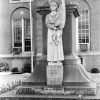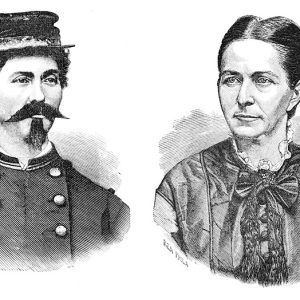calsfoundation@cals.org
Loreta Velazquez (1842–?)
In late spring of 1861, a Cuban woman named Loreta Janeta Velazquez (sometimes spelled Velasquez) adorned herself with a Confederate uniform and fake facial hair, assigned herself the rank of lieutenant in the Confederate army, and adopted the name of Harry T. Buford. According to her own account, Velazquez embarked on a remarkable career as both a Confederate soldier and spy during the turbulent years of America’s Civil War, partially in Arkansas. As professor Jesse Alemán points out in the introduction to Velazquez’s memoir, there are historical inaccuracies in the memoir (which was put together by Velazquez and her editor, C. J. Worthington) that cast some doubt on Velazquez’s authenticity. However, Alemán stresses that the memoir holds its own as a Civil War narrative despite discrepancies.
The youngest of six children of a wealthy sugar, tobacco, and coffee trader, Loreta Janeta Velazquez was born in Havana, Cuba, on June 26, 1842. Educated in New Orleans, Louisiana, and secretly harboring a desire for a military career, she had her first taste of military life on April 5, 1856, when she married a young military officer who was sent west to participate in army actions against the Mormons in Utah. In 1860, the anticipation of civil war between the Northern and Southern states further stoked her yearning for a military career. After war broke out, her husband left to fight for the Confederacy. Velazquez immediately had two Confederate-style uniforms made and began calling herself Lieutenant Harry T. Buford. She traveled to Hurlburt Station on the Mississippi River in Arkansas and stayed at the Giles homestead. She recruited a battalion of 236 men who called themselves the Arkansas Grays (CS).
Velazquez served the Confederacy as a soldier and spy throughout the war. Her memoir gives eyewitness accounts of the battles of Blackburn’s Ford, First Manassas (Bull Run), Fort Donelson, and Shiloh in Tennessee. Velazquez was wounded at Shiloh by a shell while burying the dead, and an army surgeon discovered that she was a woman. She recovered in New Orleans, and, though she never fought again as a soldier, she continued working as a spy and intelligence agent for the rest of the war. After the war, she remarried (her first and then second husbands had both died during the war) and traveled extensively throughout the American West. The date of her death is unknown.
For additional information:
Davis, William C. Inventing Loreta Velasquez: Confederate Soldier Impersonator, Media Celebrity, and Con Artist. Carbondale: Southern Illinois University Press, 2016.
Jones, David E. Women Warriors: A History. Washington DC: Brassey’s, 1997.
Velazquez, Loreta Janeta. The Woman in Battle (1876). Madison: University of Wisconsin Press, 2003.
Case D. Miner
University of Arkansas, Fayetteville
 Women in the Civil War
Women in the Civil War Loreta Velazquez's Two Looks
Loreta Velazquez's Two Looks 




Comments
No comments on this entry yet.